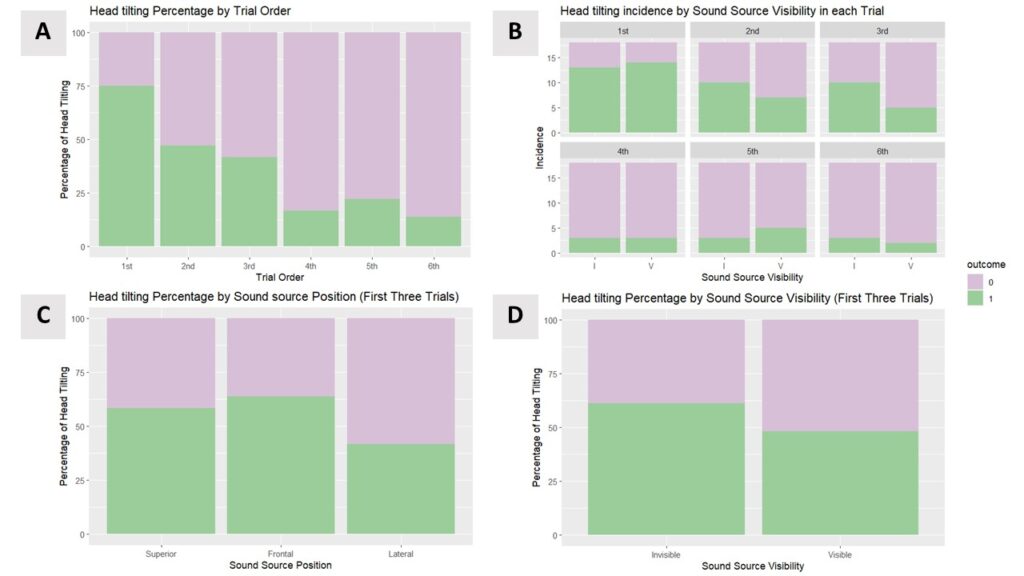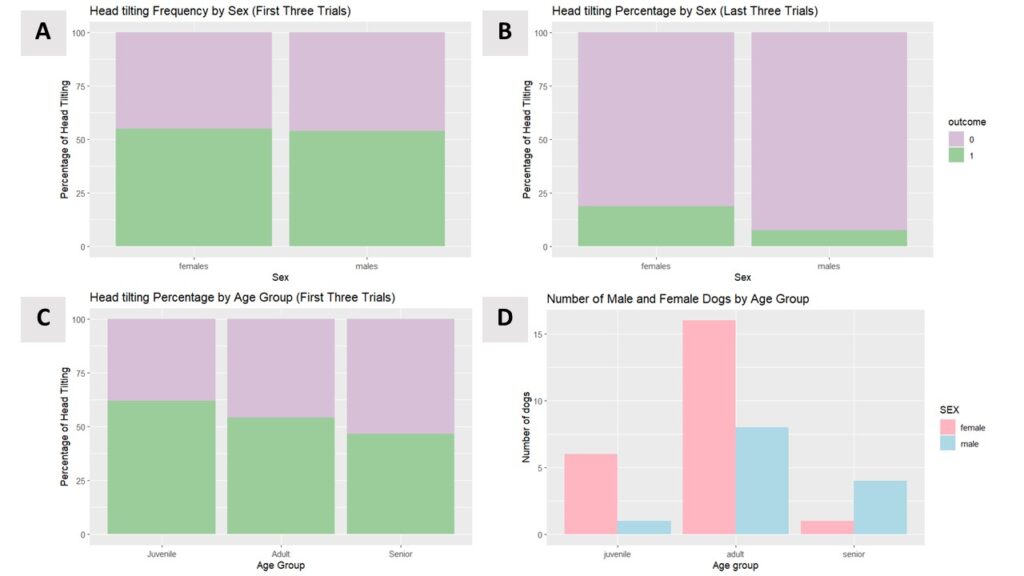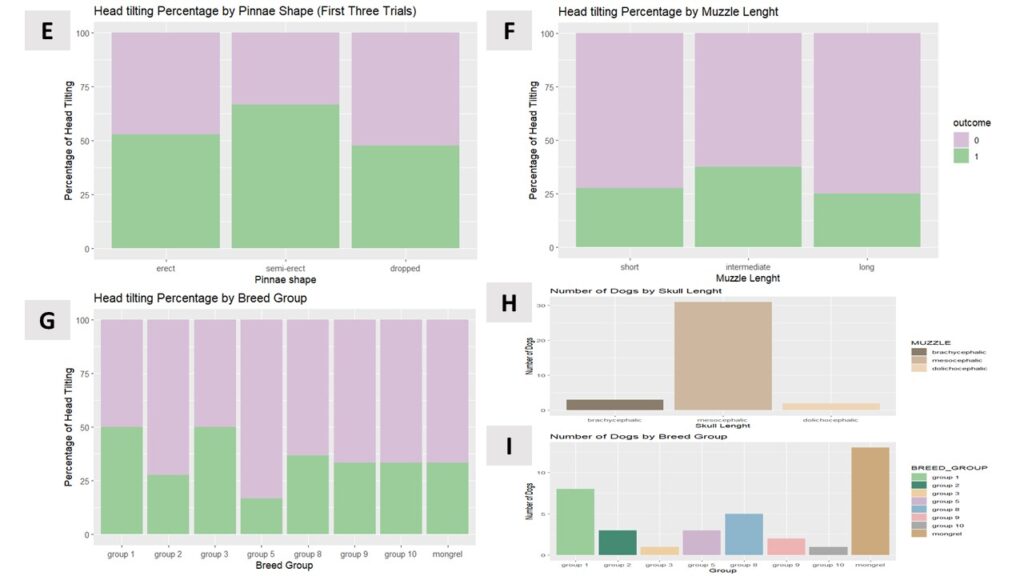
Dogs
Head tilting

frequency
Out of the 85 dogs whose owners were contacted to participate in the experiment, 85% exhibited the head tilting behaviour during their everyday life. They were of various breeds, sex and ages (2 months old and above).

Sound-related variables
Head tilting significantly decreased with trials (p < 0.001, figure A), faster when the sound source was invisible, despite not significantly (p = 0.29).
In the first three trials, a trend of a significant effect on the head tilting percentage was found regarding the position of the sound source (p = 0.078, Figure C), while the visibility of the sound source had no significant effect (p = 0.44, Figure D). Nevertheless, the head tilting percentage of dogs was higher when the sound source was located on the vertical axis and invisible.

Dog-related variables
In the first three trials the head tilting percentage of males and females was almost the same (p = 0.89, figure A), but in the last three trials females head tilted more than males, despite not significantly (p = 0.18, figure B).
In the first three trials the head tilting percentage decreased with age, despite the difference between age groups not being significant (p = 0.71, figure C).
There was an imbalance in the number of dogs belonging to different age groups, as in the ratio between the two sexes, overall and in the different age groups (figure D).

In the first three trials trials the pinnae (ears) shape had no significant effect on the head tilting percentage (p = 0.38, figure E).
The muzzle lenght and the breed group data are to be interpreted with caution because very few individuals for each breed group were present (figure H) and there were very few brachycephalic (short muzzle) and dolicocephalic (long muzzle) dogs (figure I).
The muzzle lenght had no significant effect on the head tilting percentage (p = 0.90, figure F) but brachycephalic dogs head tilted too.
There was no significance difference between the percentage of the head tilting behaviour of dogs belonging to different breed groups (p = 0.66, figure G).
Attentiveness

Mean attentiveness was 8.26 s and dogs did not pay attention in 16.20 % of trials. Attentiveness was higher in the first trials compared to the last ones (9.30 s to 8.03 s), as the percentage of trials in which dogs di not paid attention (8.33% to 25%).
Dogs were significantly more attentive when the sound source was visible (p < 0.001, figure A) but the position of the sound source had no effect on attentiveness (p = 0.89, figure B).
Attentiveness decreased with age with a trend of significance (p = 0.073, figure D). Females were more attentive than males, despite not significantly (p = 0.80, figure C).
Other variables had no significant effect on attentiveness.

Wolves
Head tilting and attentiveness

The wolves were never seen head tilting and did not pay attention to the experimental layout most of the time.
During the experiment six were standing, while two stayed seated. Ears were erected and tail dropped but not tucked between the legs. Two wolves looked at the dark screen the first time they heard the sound but then proceeded in looking elsewhere.